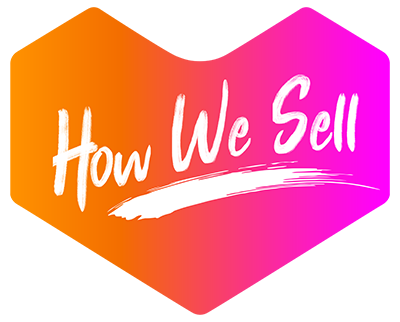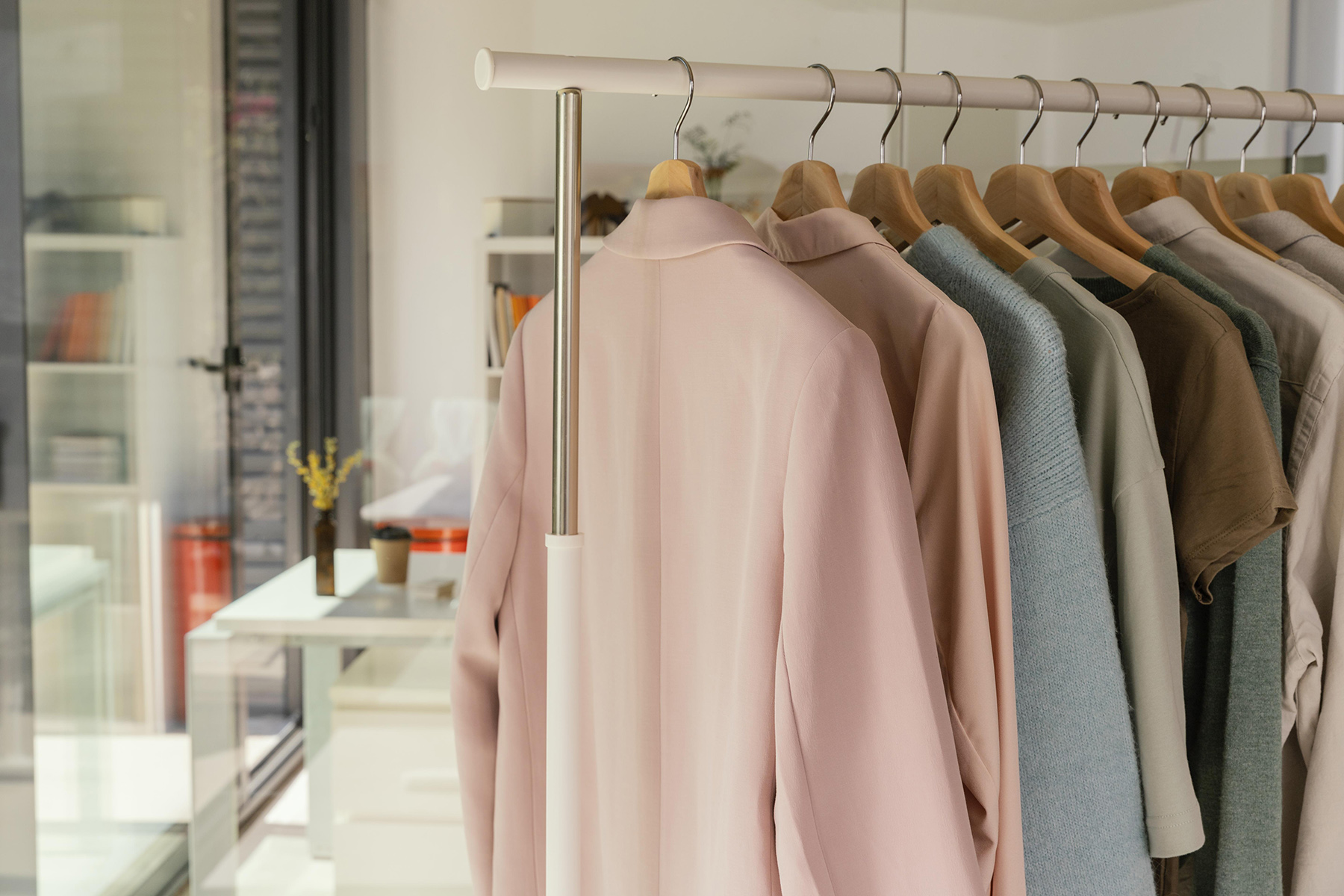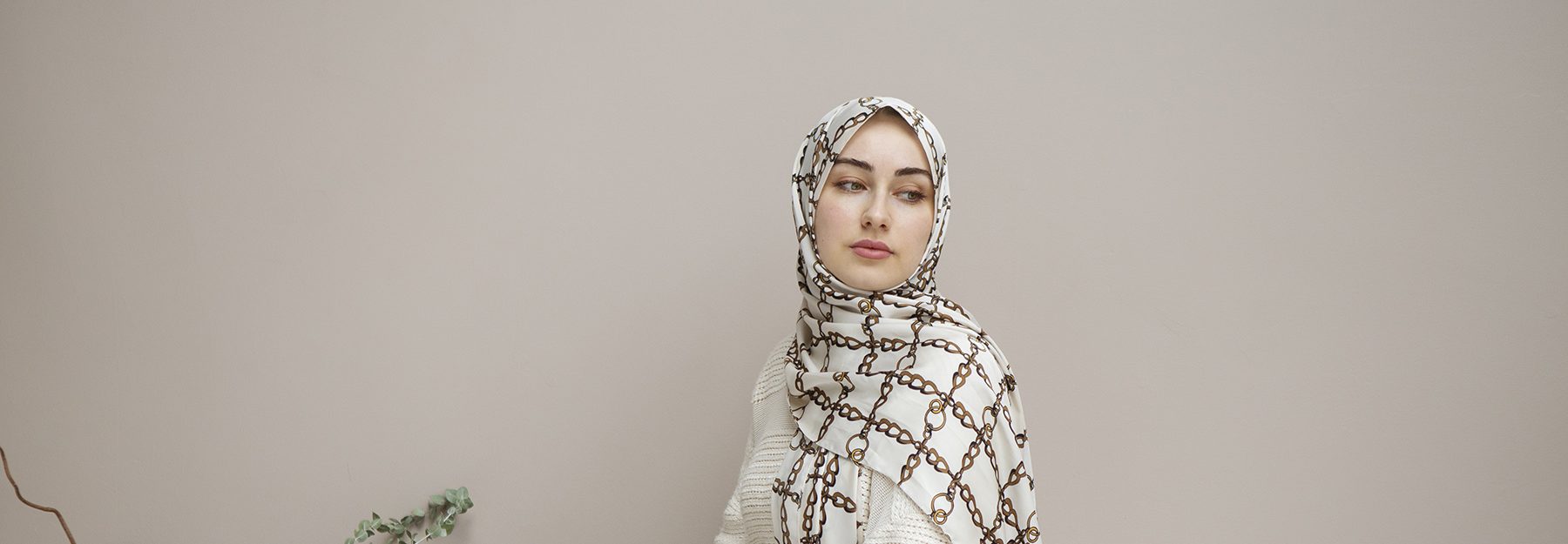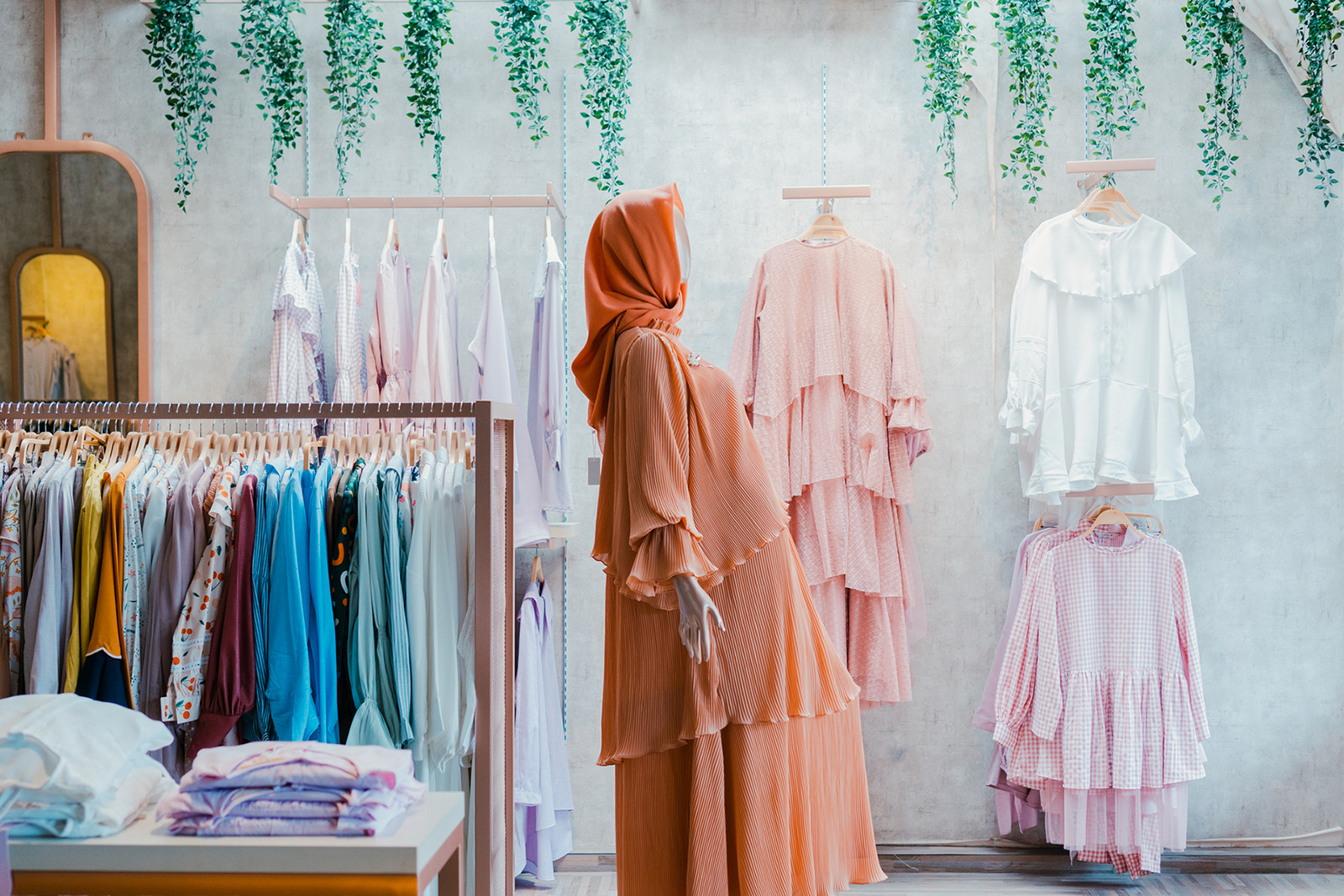Seen Chia Toong of CT HARDWARE managed to level up by breaking the tradition through e-commerce on Lazada.
Continue readingPrevent inventory management mistakes by following these simple tips
No matter what size your business is, you must run it with sound inventory management in order to be successful. This is especially true in the fashion industry.
Apparel inventory management might be the not-so-glamourous side of the fashion industry, but in the world of fashion where trends come and go at the drop of a hat, your online clothing business could suffer if you aren’t on top of your inventory management. For most retailers, there are few strategies more critical than inventory management. If you’re not tracking your inventory and supply chain, odds are you might be wasting money and not capitalizing on opportunities.
Without inventory management, your store is likely disorganized, which could lead to your business missing out on sales because you can’t find the item a customer is asking for, or perhaps you’ve got an inaccurate count and something your customer has ordered is out of stock without your knowledge. In fashion, retailers also need to be able to quickly unload items that are dipping in popularity and be ready to order the next trendiest items!
A good inventory management system will let you know what you have, what you need, and when you need it. You can also get up-to-the-minute reports on what you have in stock, what’s on order, and in transit, which takes out the guesswork from running your retail business.
Inventory management is vital for nearly every business, but here are some key reasons why inventory management especially matters when you’re in the fashion business!

Timelier Ordering
Some inventory management systems can be set up to automatically notify you when it’s time to order more inventory, such as when stock falls below a predetermined level. By always having your key items in stock, you’ll be sure to not miss sales due to out-of-stock items, and ensure your customers always find the products they want, when they want them – without having to go to a competitor. Running out of stock on an item can have negative effects on your business as each lost sale is lost revenue, which can really add up over time.
Increase Customer Satisfaction
When a customer wants something, you don’t have in stock, there’s very little chance the consumer will wait around for the item to come back in stock, especially when it comes to fashion eCommerce. More likely, they will look to another retailer to fulfil their need,
Making sure you always have the on-trend items you market in stock will ensure they can rely on you, and will increase their loyalty to your store and brand.
Keeping Costs Low
Many fashion business owners think the answer to never running out of stock is simply to carry more stock in the first place. While holding inventory is an inescapable part of doing business, holding too much inventory can be a weight around your business’s neck. Not only will you be paying for that excess inventory, those trendy outfits you’ve got an excess stock of might not be in demand three months from now. You never want your money to be tied up in things like additional labour hours for managing inventory, additional space for storing inventory, or higher insurance costs. Your business will benefit far more when you are able to ensure you always have the right amount of product on hand to meet the needs of your customers.

Identify What’s Hot (And What’s Not)
With inventory management, you are able to track which items are selling and which are not. This can help you in your business and marketing strategies and to make better decisions. For example, when you are able to identify your slow moving items, you can adjust their placement, pricing, or other issues sooner to make sure they sell. You can also promote certain items together if you’ve noticed that they are frequently purchased together.
Avoid the Dreaded Dead Stock
If you work in fashion, you know trends come and trends go. What’s hot today might be totally out of style in three months. Without inventory management, you might be left sitting on outfits you’ll either never sell, or have to sell at a greatly reduced price. The bottom line is, you do not want to be stuck with dead stock, or stock you can no longer sell because no one wants it.
Managing inventory can be challenging, but it is a crucial step to running your fashion business. A store without proper inventory management systems in place is a store that’s not reaching its true potential. Don’t let inventory excess or shortages be the reason why your store is not profiting and pay attention to your inventory management today.
Join Lazada’s latest fashion Gayamu, Caramu campaign and stand a chance to win cash prizes total worth up to RM60,000, Sponsored Discovery Ads credit total worth up to RM3,000 and more!
Interested to be your own boss? Sign up as a Lazada seller today.
Follow us on Facebook, Instagram, TikTok, and subscribe to our YouTube channel for the latest ecommerce trends and seller hacks.
These editing software are free!
The best e-commerce website designs all have one thing in common – amazing product images. Customers can’t physically touch or experience your products, so making them come to life online can be the key to your success.
Continue readingSteps to set up your fashion store (Part 2)
Ecommerce offers a huge opportunity for fashion enthusiasts to start their own online clothing store.
Maybe you’ve been making your own clothes and sketching designs ever since you could remember. Or maybe you just love the idea of style and fashion and would like a piece of the exploding fashion eCommerce industry. With the growth of digital channels, increased online access through mobile devices and technological innovations, the online fashion industry has skyrocketed, leaving plenty of room to join in on the action regardless of your motivation.
Launching a business doesn’t happen overnight, and setting up your online fashion store to its fullest potential might take some planning. Before you start listing your wares for sale, you need a foundation that will steer you in the right direction from the start.
In the first part of our ‘Setting up your fashion store’ series, we delved into the importance of deciding on your niche, identifying your target audience and managing your inventory. What are some of the other important aspects you need to know about setting up your online fashion store?

Step 1: Sourcing and manufacturing the clothes for your line
Now that you have your business plan to guide you, it’s time to get into the meat of learning how to start a clothing line: designing your clothing and sourcing your material. This can be the most challenging part of the process for many entrepreneurs starting a clothing line, especially those who haven’t worked in the fashion industry before.
You might have a clear idea of what kinds of materials you want to create your product with, or you may need to do some research. Finding reliable manufacturers or product suppliers for a price you can afford is half the battle of running an online boutique. A major challenge every designer will face is reconciling the cost and the quality of your materials.
Finding the right manufacturer to produce your clothing is crucial to bringing your vision to life. When seeking a manufacturer, consider factors like your manufacturer’s minimum order quantity, cost, quality and trustworthiness. You might also want to find a manufacturer with in-house pattern makers to streamline your processes.
Step 2: Locate and vet your suppliers
Even if you’re making everything yourself, your suppliers will help you bring your products to life. And you need to make sure you’re balancing the quality of the supplies with your budget. Ultimately, you want to find a supplier or wholesaler who offers quality products, on-time delivery and excellent customer service.
When choosing your supplier, here are some things to look out for:
● Consider quality: To ensure that you’re delivering quality products to your customers, you must check how good they are yourself. Request samples so you have a better idea how the products will look and feel.
● How will the relationship work: Will you have a point person to communicate with? How quickly can you expect deliveries, and how much control do you have over the amount you order?
● Location: Having someone close to home as a supplier or manufacturer makes it easier to communicate your needs. You might also find that working with local boutique vendors helps you get your supplies quicker.
● Reviews: Does the supplier have a history of success? Check online for reviews or reach out to your network to see if anyone has worked with them before.
Step 3: Price your products
Choosing a price point for your products is a balancing act and will affect every area of your business. A lower price isn’t always ideal, as the product might see a healthy stream of sales without turning any profit. Similarly, when a product is priced too high, a retailer may see fewer sales and lose their market positioning among more budget-conscious customers.
Ultimately, every business owner must find and develop the right pricing strategy for their particular goals that also aligns with your market. Consider factors like cost of production, consumer trends, revenue goals, funding options, and competitor product pricing and you’ll have a better sense of how much it costs to start your clothing line, and therefore, you can price your items accordingly.
Your initial market research and knowledge of your target audience will come into play when it comes to pricing. You should already have a sense of who your demographic is, what their spending habits look like and how much they’d be willing to spend on your items. You can always decide to edit or change your pricing as you launch your clothing line and have a better feel for the market.

Need some extra inspiration?
From selling offline with physical stores in both Malaysia and China, Mr. Sheikh Omar, owner of Siti Annum Online Store, decided to bring his passion to the online world at the age of 69. Without any knowledge in eCommerce, it is his passion and market demand for his products that has led his business selling Muslim Wear to success.
Using Lazada Seller Tools such as the Sponsored Discovery to boost internal traffic and enhance visibility, Siti Annum Online Store has seen a 10% YOY growth with its products such as the telekung, inner hijab, hijab, and kaftan.
The company ensures that their assortment strategies tie-in together with buyer demands, and focuses on having the right products with right pricing. As an eCommerce fashion store, it also ensures that the business always has a Seller rating of >95%, product quality rating of above 4.5 and a chat response rate of above >85% in order to stay at the top of its game. This is a great example of how quickly and successfully your online fashion store can grow with the right strategies in place!
At the end of the day, with the right combination of skills, a solid business plan and a flexible eCommerce platform, you can set up your fashion store and get it up and running in no time. With so much potential on the horizon, taking a leap into the world of fashion eCommerce now can help you capitalize on trends rather than letting an opportunity pass you by.
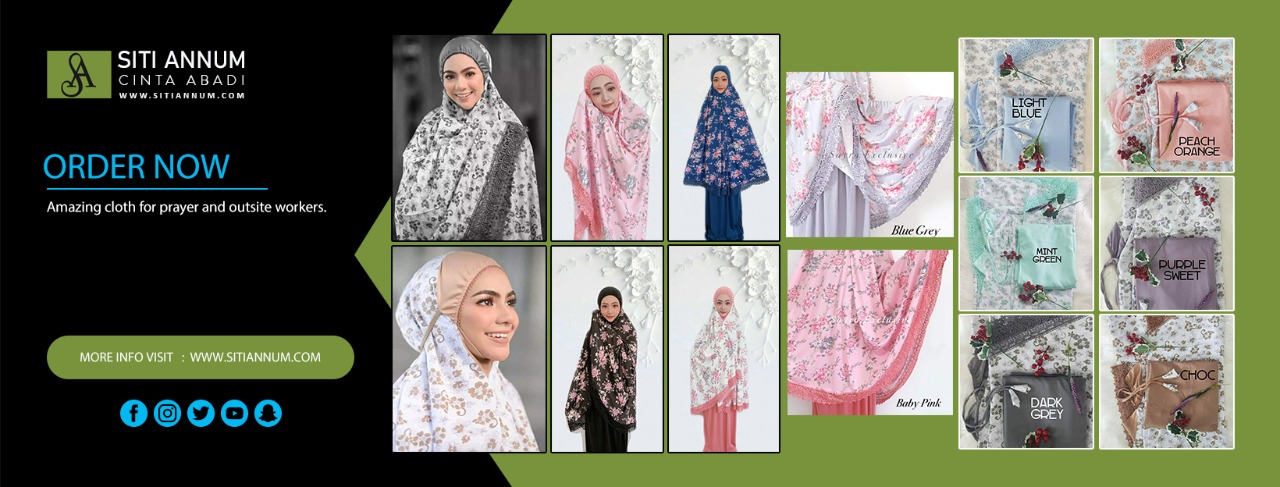
Join Lazada’s latest fashion Gayamu, Caramu campaign and stand a chance to win cash prizes total worth up to RM60,000, Sponsored Discovery Ads credit total worth up to RM3,000 and more!
Interested to be your own boss? Sign up as a Lazada seller today.
Follow us on Facebook, Instagram, TikTok, and subscribe to our YouTube channel for the latest ecommerce trends and seller hacks.
Tips penerangan produk dan maklumat untuk produk fesyen
Pelanggan yang singgah di halaman stor anda mencari produk yang betul-betul sesuai dengan keperluan mereka. Penerangan produk yang menarik penting supaya pelanggan anda merasa seperti produk anda betul-betul dibuat untuk memenuhi keperluan dan kehendak mereka.
Sudah tiba masanya anda belajar beberapa taktik tentang penerangan dan maklumat pengukuran produk fesyen.
1. Ceritakan tentang produk anda – Sentuhan peribadi sentiasa mampu untuk menarik perhatian pelanggan. Bermain dengan kata-kata dapat mencipta keinginan untuk pelanggan anda membeli. Tulis tentang produk anda seolah-olah anda sedang bercakap secara terus dengan pembeli. Ciri-ciri produk, jenis bahan, dan saiz – kesemuanya harus diliputi secara terperinci tetapi dalam format yang memukau. Padat dan lengkap.
Tetapi ingat: Penulisan anda haruslah disasarkan kepada pelanggan ideal anda. Jika anda menjual barangan yang berkaitan dengan melancong, anda harus tahu gaya bercakap dengan pelancong.
2. Elakkan jargon – Anda mungkin telah berada dalam industri fesyen selama bertahun-tahun dan tahu banyak perkara tentang lingo fesyen, tetapi rata-rata pembeli mungkin tidak. Jangan gunakan perkataan yang hanya anda boleh fahami, dan pastikan tajuk produk juga ringkas.
3. Jaga nada anda – Nada anda mesti selaras dengan keperibadian jenama anda. Jika anda seorang penjual sut mewah dan pakaian pejabat, elakkan perkataan yang terlalu ‘trendy’ dan guna perkataan yang lebih sesuai seperti “klasik” dan “halus”.

4. Jadi lebih kreatif – Elakkan dari memuji produk anda sendiri. Pelanggan anda akan menilai produk anda sendiri. Sebaliknya, guna perkataan deskriptif yang memberi butiran yang membina kepada penerangan produk seperti “elegan” atau “tahan lama”, bergantung kepada jenis produk yang anda jual.
5. Fikirkan tentang faedah memiliki produk anda – Butiran teknikal memang penting, tetapi spesifikasi produk semata mata tidak mendorong jualan – senaraikan manfaat produk anda. Pelanggan ingin tahu perasaan mereka terhadap sesuatu produk dan bagaimana orang lain akan melihat mereka apabila mereka memakainya.
6. Pastikan penerangan produk anda mesra imbasan – Pembeli tidak akan membaca karangan yang berjela-jela. Mereka hanya akan mengimbas, dan jika penerangan anda efektif, mereka akan berhenti dan membaca keseluruhan penerangan produk anda. Untuk menulis penerangan produk yang mesra imbasan, anda harus:
- Gunakan nama produk yang ringkas, menarik, dan mudah difahami
- Gunakan titik tumpu (bullet point) untuk spesifikasi teknikal
- Pastikan banyak ruang putih dalam perenggan
- Gunakan saiz tulisan (font) yang mudah dibaca
- Tulis dua baris deskriptif untuk menarik minat pembaca

7. Jawab soalan yang berpotensi untuk ditanya oleh pelanggan – Fikirkan tentang sebarang soalan yang mungkin ditanya oleh pelanggan anda yang tidak semestinya dijawab oleh imej produk yang anda sediakan. Contoh: “Adakah beg tangan itu mempunyai poket di dalam untuk saya simpan telefon saya?” dan “Bagaimana saya akan pakai dan tanggalkan baju yang ketat itu?”.
Di kedai fizikal, anda akan cuba berhubung dengan setiap orang yang masuk dengan harapan mereka menjadi pembeli; strategi yang sama mesti digunakan untuk e-dagang.
Fikirkan tentang bagaimana anda akan memasarkan produk anda di kedai fizikal dan kemudian cuba menyuarakannya dengan tulisan untuk pembaca dalam talian. Sebagai penjual barangan fesyen, pelanggan menganggap anda lebih tahu tentang trend dan gaya, jadi berikan nasihat tentang cara terbaik mereka boleh menggayakan produk anda.
Sertai kempen fesyen Gayamu, Caramu oleh Lazada dan berpeluang memenangi hadiah wang tunai keseluruhan bernilai RM60,000, kredit iklan Lazada Sponsored Discovery kesuluruhan bernilai RM3,000 dan banyak lagi!
Nak jadi bos tersendiri? Daftar sebagai penjual Lazada hari ini!
Ikuti kami di Facebook, Instagram, TikTok serta subscribe channel YouTube kami untuk informasi terkini mengenai e-dagang dan pelbagai tips menjadi penjual dalam talian yang berjaya.
TATO Shop – Fashion Case Study 1
Get inspired by eCommerce business TATO Shop, a Muslim wear brand that is reaching new heights every day.
Continue readingSign Up as a Lazada Seller in 4 easy Steps
Signing up as a Seller on Lazada is quick and simple. Follow the steps detailed below to start your eCommerce journey today!
Continue reading